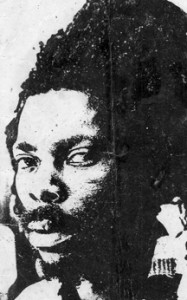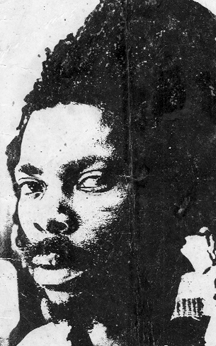by A. A. Fenty
I share these notes for two main reasons. Firstly, it is a (personal) pity that certain rogue elements – many phony – of the Rastafarian community have communicated a negative image of that movement to the wider society.
Pity too that that perception now emanates from the proud village of BUXTON – the East Coast, Demerara Community which location and history have produced the Younges, the Kwayanas, the Paynes, the Parrises, et al.

JAMAICAN RASTAFARI – BIRTH AND GROWTH
Obviously, this brief piece can never allow for detailed insights into the genesis and development of Rastafarianism. But I can give reference
sources for those interested in the origins of this movement – this system of beliefs, worship and culture.
A great start would be the 1960 Report on the Rastafari Movement in Kingston, Jamaica produced by three eminent Caribbean academics, Roy Augier, M G Smith and Rex Nettleford. This was done at the invitation of the besieged Rasta Community in the Capital of Jamaica. Principal of the then University Colleges of the West Indies (UCWI) Arthur Lewis was to commend this Report to Jamaica’s Premier, Hon. Norman Manley (There had been earlier studies by the College in 1953 – 55). However, the 1960 Report, replete with ten landmark recommendations for the Jamaican Government, seemed to have influenced much consideration and engagement when published by UCWI’s Institute of Social and Economic Research (ISER).
Here is the briefest summary of Rastafarian beginnings and development.
Prophets, personalities, doctrine – reportedly, poor working – class Jamaicans of the nineteen – twenties knew two “prophets”. One was a character named Bedward.
He attempted to fly, yes fly, to heaven, was arrested, tried and placed in a mental asylum. But he left behind a settlement near to the UCWI. The second prophet, later virtual Messiah to the poor, was Marcus Garvey.
Garvey founded the Universal Negro.
Improvement Association (UNIA) in the USA. He proclaimed “Black Nationalism” and preached Africa for the Africans – One God, One Aim, One Destiny.
Garvey sought to established a Black State in Africa for Western World negroes. He founded the Black Star Shipping Line to do the transportation.
The Line was a failure but his message was a success resonating with oppressed and needy Third World and American Blacks.
The UCWI Report notes that: “In 1927 Marcus Garvey was deported from the United States and returned to his homeland, Jamaica, preaching his doctrine of Black racial pride and return to Africa. It seemed that he was a prophet without honour in his own country. The whites and browns disliked the doctrine. The Blacks found it rather onerous, for Garvey emphasized the virtues of thrift, hard work, perseverance and foresight, and relied on his followers to pay their way to Africa by their own efforts.
The Jamaica to which Garvey returned must have seemed to him not very different in its racial organization from the American areas with which he was familiar. Garvey is said to have told his people to “Look to Africa, when a black king shall be crowned, for the day of deliverance is near”.
Truth has two levels in social affairs. There are actual events, and there are statements about actual events. Statements believed to be true are often sociologically more important than those which are true. What people believe or assert emphatically, represents a social force which cannot be disposed of merely by denial. For the Rastafari brethren today, Garvey is a major prophet, but his relationship with the founders of the Rastafari movement between 1930 and 1935 remains obscure.
In November 1930, Rastafari Makonnen was crowned as the Emperor Haile Selassie, King of Kings, Lords of Lords, and the conquering Lion of the Tribe of Judah.
Some Jamaicans of a Garveyite persuasion say that they then began to consult their Bibles. Could this be he of whom Garvey spoke? A number of texts showed that it was. Revelation 5: 2, 5 – “And I saw a strong angel proclaiming with a loud voice, ‘Who is worthy to open the Book, and to loose the seals therefore? .. And one of the elders saith unto me. ‘Weep not:
behold, the Lion of Judah, the Root of David, hath prevailed to open the Book and to loose the seven spirits of God sent forth into all the earth”.
Later, when the Italians invaded Ethiopia, Revelation 19: 19 was fulfilled -“And I saw the Beast, and the kings of the earth, and their armies, gathered together to make war against him that sat on the horse, against his army”.
In 1941, with the Emperor’s return to Ethiopia, the succeeding verse was fulfilled – “And the Beast was taken, and with him the false prophet that wrought miracles before him, with which he deceived them that had the mark of the Beast, and them that worshipped his image. These both were cast alive into a lake of fire burning with brimstone”.
The doctrine that Ras Tafari, known to the world as the Emperor Haile Sellassie I of Ethiophia, is the Living God, was developed by several persons independently.
It’s obvious that I cannot herein recount the colourful history of the personalities and disciples of the sect which developed the movement.
Except to mention that names to be researched will include the Jamaicans Leonard P. Howell, Joseph Nathaniel Hibbert, Archibald Dunkley, Robert Hinds, Johnson, Erungton, Davis and Ricketts. The research awaits any interested student(s) of Rastafarianism.
In passing we must note that Marcus Garvey himself paid a notable visit to British Guiana in 1937, just three years before he died in England. He attended a lively convention of his UNIA branch in the colony, chided certain dissenters and promised international assistance to strengthen the British Guiana contribution to Black consciousness. Rastafarianism, in its formal, structured manifestation, was not present in 1937. It should be noted here that Garvey’s local UNIA was a fraternal affiliate of the burgeoning labour movement led by the local working – class founder – leader Hubert Nathaniel Critchlow.
A MAKONNEN FROM BUXTON
Here, I am going to dare to posit a positive though indirect connection and relationship between a Buxtonian Guyanese and the Jamaican/Eithiopian foundation of Rastafarianism.
Research reveals that George Thomas Nathaniel Griffith was born in Buxton around the early 1900’s. He was later to assume the name (Ras) Makonnen as so many Rastafarians and Rastafari – related brethren would do after Ras Tafari Makonnen was crowned Haile Selassie I, the 225th Monarch of the Solomonic Dynasty in Ethiopia in November of 1930. George – Ras Makonnen – Griffith and his cousin David Talbot, would be soon “drawn far beyond their interest in local politics by the impact of Garveyism and other North American (African) influences”.
So much so that, after associating actively with his father’s hinterland mining projects, and after Queen’s College, his migration to American educational opportunities landed him in New Orleans just a few days before the final deportation of Marcus Garvey (from the’ States) back to his native Jamaica”.
The Buxton – born Ras Makonnen complemented varied academic training and achievements throughout the USA with activist Black nationalism activities. Chicago, Virginia, Toronto, then Cornell (University) were early locations for his groundings. Then Copenhagen, London and Manchester brought him into contact and friendship with Kwame Nkrumah’s Colleague George Padmore. It was obvious that he played a prominent role in Padmore’s Pan Africanist work but that must be left for another installment.
Suffice to record that Buxton’s Ras Makonnen, who himself boasted an Ethiopian grandfather settled in British Guiana gold -fields, was one who personally welcomed Emperor Haile Selassie to London in 1936. He established and published many journals relevant to Pan Africanism and, no doubt Rastafarianism, up to his eventual assignment in Kenya – after imprisonment in Ghana.
So it is that the proud law – abiding people of Buxton, East Coast Demerara, can be inspired by the work of their own Ras Makonnen. They should also take the opportunity to chide those younger descendants, including Rastafari, NOT to sully Buxton’s name and the work of Ras Makonnen, by the infiltration of bogus Rastafarians whose alleged roles in any “insurgency” would be more criminal than justified by any claims of marginalization which is also actually being experienced by other poor ethnic communities in this land.
Email: allanafenty@yahoo.com





